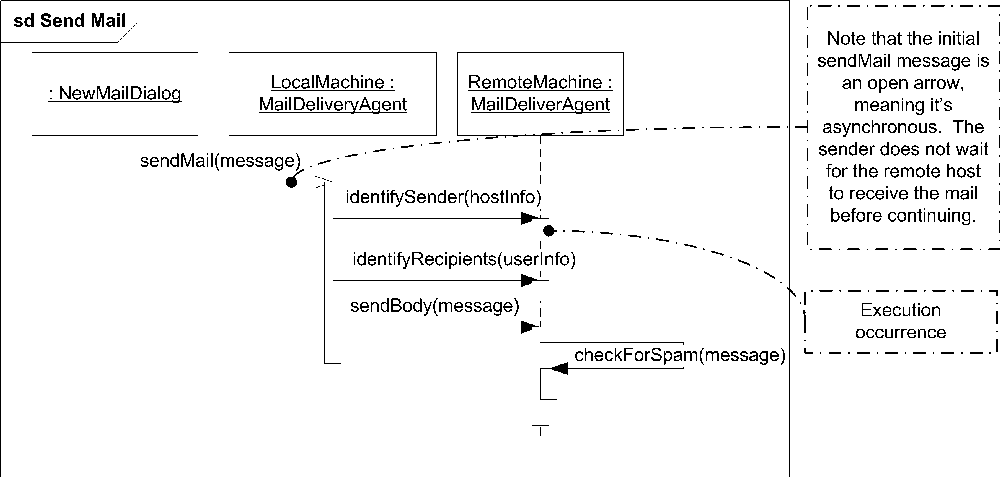Execution Occurrences
You can show an object is involved in executing some type of action (typically a method call) for a measurable amount of time using an execution occurrence. Execution occurrences are shown as gray or white rectangles on a lifeline. In practice, it is common to hear execution occurrences called "focus of control," because they indicate that an object is busy (has the focus of the system) for some period of time. Figure 10-12 shows several execution occurrences in response to messages.

Figure 10-12. Several example execution occurrences
While not officially part of the specification, it was a common practice in UML 1.x to show messages starting from an execution occurrence on a lifeline to indicate that an object will send messages to other objects as part of processing a received message. With UML 2.0, it may be more appropriate to show a set of messages as an interaction fragment. Using interaction fragments, an appropriate interaction operator, and a reasonable name, you have much greater flexibility in expressing exactly how a piece of the system executes and how it fits into the bigger picture. See "Combined Fragments" for more information on interaction fragments and the various ways you can organize messages to increase your diagram's readability.
Get UML 2.0 in a Nutshell now with the O’Reilly learning platform.
O’Reilly members experience books, live events, courses curated by job role, and more from O’Reilly and nearly 200 top publishers.

